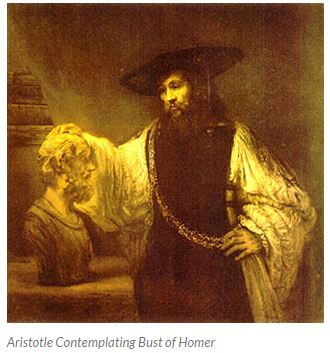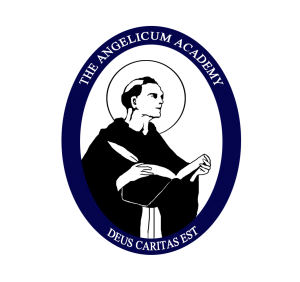
Patrick S. J. Carmack
STUDYING FALSEHOODS EAST AND WEST
by Patrick S. J. Carmack
If it could be established, incontrovertibly, that Albert Einstein once wrote that 2 + 2 = 5 (i.e., an obvious error), would that render the rest of his work worthless? Since Homer believed in the mythological Greek gods, should his works be read by Christians, Muslims or Jews? Should Darwin be read to understand his impact on the modern world, even by those who deny his evolutionism? In short, should works which contain errors or falsehoods be read and studied?
For members of any of the three religions mentioned above, the only books held to be without errors are their sacred works. Therefore for them the issue becomes whether they might read and study any books other than the Bible, the Koran, or the Torah, respectively. Unanimity has never been reached on this question in the West. There have always been those who spurn all but sacred texts. However, it is undeniable that the great, overwhelming weight of scholarly opinion (religious or otherwise) in Western civilization and in all three of the religions mentioned above, is that other classic works (religious and secular) ought to be read and studied, errors and all. By doing so, whatever truths other great works contain can be grasped and thus knowledge, understanding, and wisdom advanced, and errors can be exposed and defanged.
None of us, none of our children, however protected and isolated, can live without running into contact with error and falsehood. But truth has a certain splendor, a certain “ring” to it, as is commonly acknowledged, that makes it naturally attractive to the mind, whereas falsehood is naturally repugnant. This gives truth a natural advantage over error which can be leveraged and enhanced with a proper approach.
In the West, traditional classical education has adopted this prudential approach to solving our question: children are first taught simple, fundamental truths (religious and otherwise), as well as the skills to recognize errors (such as logic and ethics). Only then are they gradually introduced to simple errors corresponding with their ability to recognize and understand the refutation provided by their parents/teachers to such errors. It is the duty of parents to assure that this process of intellectual growth is gradual, age-appropriate, and that the refutations of errors provided are sufficient and persuasive. That being done, the result is that no harm is done, rather the student is strengthened in both his understanding and love of the truth, and his ability to recognize and refute error and falsehood.
 In this traditional, classical approach to the issue of reading non-sacred works, children gradually become independent thinkers, not easily misled by lying propaganda, demagoguery and Madison Avenue hype. They gain the ability to help others recognize the errors and falsehoods that enslave them in ignorance and fear, as well as the ability to highlight the truth. Further, they gain the intellectual skills to understand and better appreciate sacred texts. Perhaps it should be noted here that the Bible has always been included as part of the great books. This is the traditional, classical approach to error, falsehood and ambiguity, whether real or imagined, embodied in the Great Conversation of Western civilization, beginning with the ancient Greeks.
In this traditional, classical approach to the issue of reading non-sacred works, children gradually become independent thinkers, not easily misled by lying propaganda, demagoguery and Madison Avenue hype. They gain the ability to help others recognize the errors and falsehoods that enslave them in ignorance and fear, as well as the ability to highlight the truth. Further, they gain the intellectual skills to understand and better appreciate sacred texts. Perhaps it should be noted here that the Bible has always been included as part of the great books. This is the traditional, classical approach to error, falsehood and ambiguity, whether real or imagined, embodied in the Great Conversation of Western civilization, beginning with the ancient Greeks.
In the four or five major intellectual traditions in the East, the fundamental epistemological assumptions (“self-evident truths”), acknowledged as the foundation for thought in the West, are denied. None of the Eastern cultures claims truth for its philosophical doctrines, as Dr. Adler has noted, and so must be chosen as a matter of taste rather than truth. As a result, no one great dialogue has developed. Lacking any ground for truth, the East fell prey to extreme skepticism and nihilism, to the point of denying the reality of all reality. Maya and sunya – illusion and the void – take the place of truth and certain knowledge. It is primarily for this reason that there still exist fundamentally separate conversations (or cultural dialogues) in the West and East, and why, as is, they are absolutely irreconcilable.
Lacking the ground for truth, the many Eastern conversations cannot properly establish the difference between truth and falsehood. For this reason, their works are not studied in the formative levels in traditional Western liberal education. Multiculturalism falsely claims to bridge this chasm, but only confuses the minds of students faced with such unbridgeable intellectual distances. It is for this reason that St. John’s College made the sagacious decision to teach the Eastern classics in the graduate program only, and only after the students had been well-grounded in the Western classics in their undergraduate program.
In conclusion, the Western intellectual tradition recommends the age-appropriate study of non-sacred classics, all of which contain some errors, in a manner designed both to protect and to arm the student against them. Eastern classics are excluded, until the Western logical and epistemological intellectual skills are well-grounded in reality.

